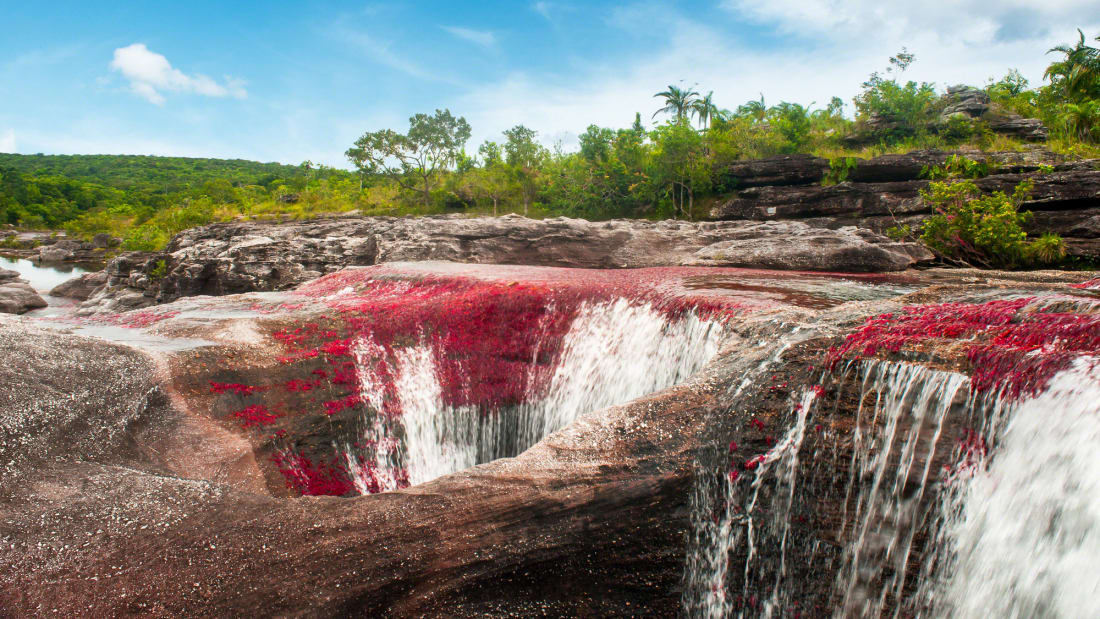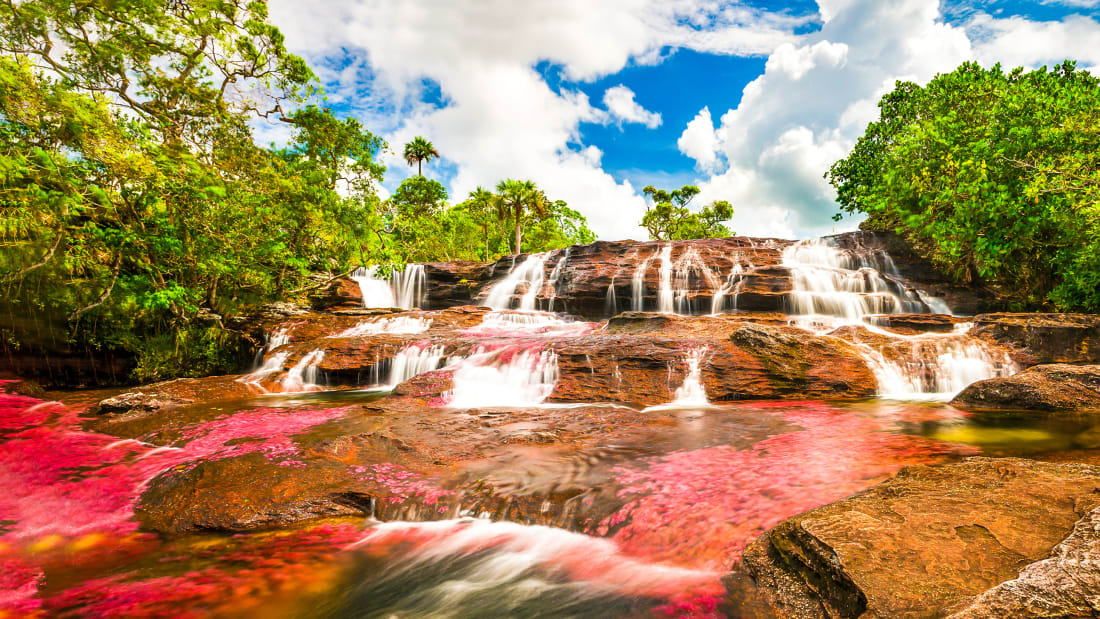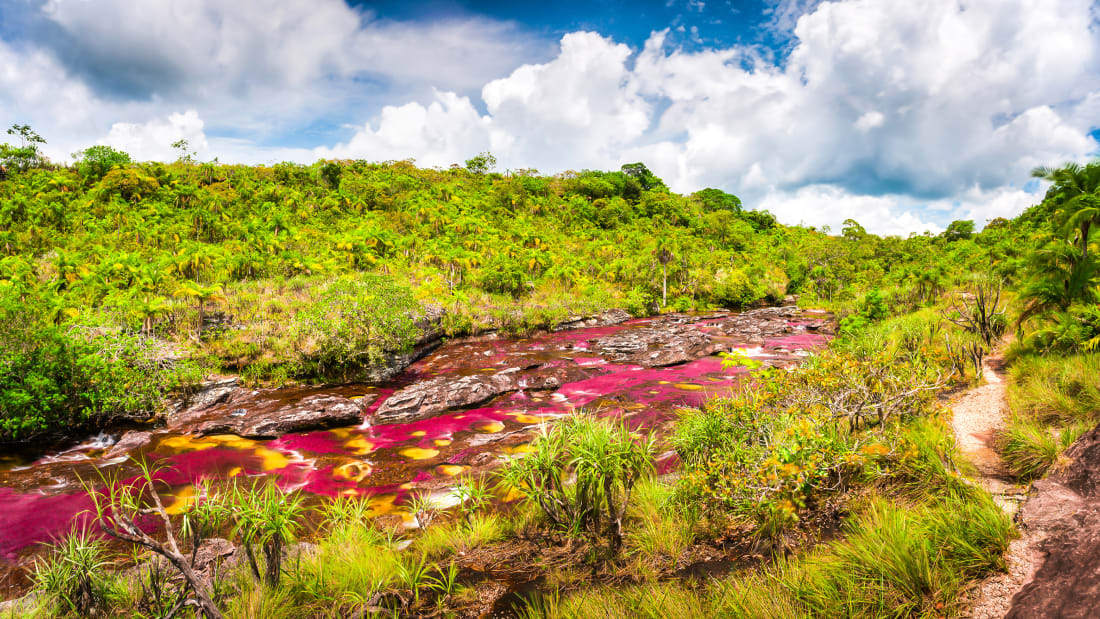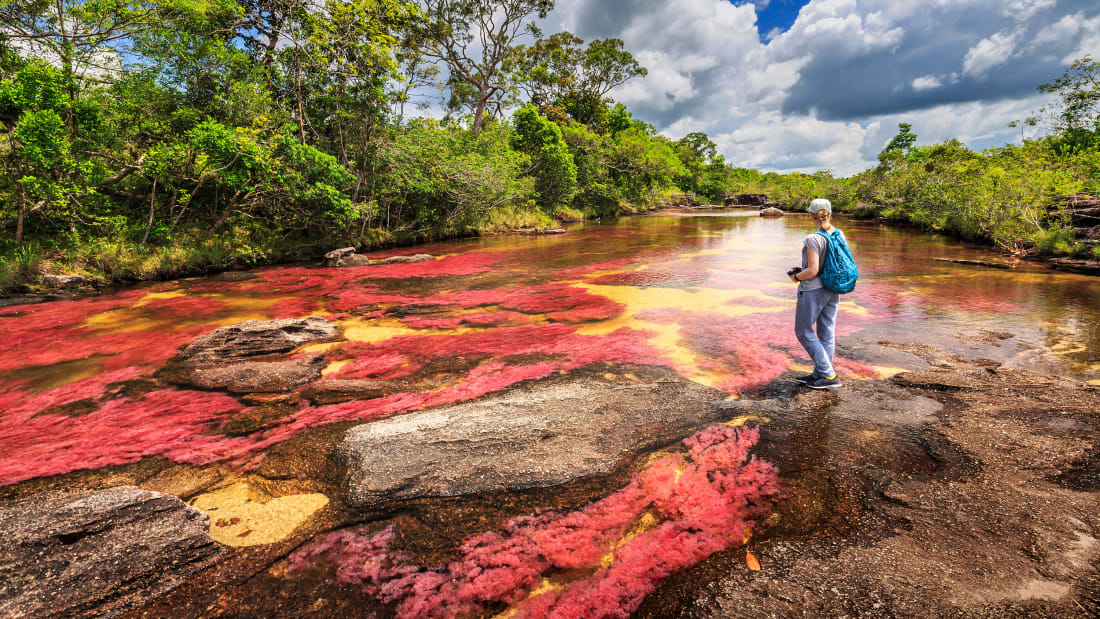In a well-preserved spot of wilderness at the heart of Colombia runs a river, according to local legend, has escaped paradise to flow through Earth. Caño Cristales, also known as the River of Five Colors and the Liquid Rainbow, is located in Serranía de la Macarena National Park, in the Colombian province of Meta. The river is around 100 kilometers long, and is renowned for a unique biological phenomenon that occurs nowhere else on Earth.

Every year, June – November, the riverbed erupts in a vibrant spectrum of purples, fuchsias, pinks, yellows, and greens. These marvelous colors are produced during the reproductive process of a rare endemic species of plants known as Macarenia clavigera. During the rest of the year, the riverbed appears in a muted dark–green hue. The plant’s growth and color is determined by a number of factors, including rainfall, temperature, and sunlight. According to these variables, the River appears different every year. The Caño Cristales river features waterfalls, pools, and caverns, making the scene even more breathtakingly dramatic.

The Macarenia clavigera is a unique species that requires very specific ecological conditions to grow. The one-of-a-kind geological composition and the favorable climate of the region marks it the one and only habitat for this species on Earth. The Caño Cristales river runs atop a massive rock formation, known as the Guiana Shield, which stretches across much of north-eastern South America. The Guiana Shield is 1.7 billion years old, and is considered one of the oldest geological formations on the Planet. It is rich in minerals, such as phosphorous, iron, quartz, among others, which support the growth of the Macarenia clavigera.

It came as a surprise for me to know that such a spectacular location remained unknown to the world until very recently. In addition to its isolated location, which requires the assistance of specialized guides to reach, the whole region has witnessed a long war between the Colombian authorities and drug traffickers on the one hand, and the Revolutionary Armed Forces of Colombia (FARCO) on the other hand. As a result, the region was too dangerous to visit and closed to the public.
However, in 1989, Colombian journalist Andrés Hurtado García went on a hiking adventure, hiding from the rebel forces. Taken by the beauty of the Caño Cristales river, he photographed it and published the photos in a local newspaper, describing it as “the most beautiful river in the world”. Luckily, the Colombian Government gained control over the area, reaching a deal with the rebels in 2016, allowing thousands of adventurers from around the world to make their way to the River annually.

Due to the fragility of the ecosystem, however, the Government has taken strict measures to protect the plant. For instance, only 200 are allowed into the area per day, in groups no larger than seven. Also, visitors are not allowed to bring along any chemical products that could contaminate the water, including cosmetic and sun protection products. During the dry seasons, the site is closed to allow the area's ecology to recover.
A major challenge posing a threat to the River ecosystem is deforestation in surrounding Colombian forests. Deforestation has a direct impact on rainfall patterns in the region, which would in turn have a direct impact on the clarity of the River water. Upsetting the habitat conditions will eventually cause the Macarenia clavigera to become extinct.
Checkout this video
References
bbc.com/travel
edition.cnn.com
pandotrip.com
southamericabackpacker.com